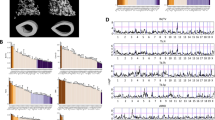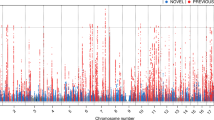Abstract.
The work to failure is defined as the maximum energy bone can absorb before breaking, and therefore is a direct test of the risk of fracture. To determine the genetic loci influencing work to failure, we have performed a high density genome-wide scan in 633 (MRL × SJL) F2 female mice. Five loci (P <0.005) with significant effects on work to failure were found on chromosomes 2, 7, 8, 9, and X, which collectively explained around 20% variance of work to femur failure in F2 mice. Of those, only the QTL on chromosome 9 was concordant with bone mineral density (BMD) QTLs. Eight significant interactions (P <0.01) between marker loci were identified, which accounted for an equivalent amount of F2 variance (23%) to combined single QTL effects. Our results demonstrate that most of the genetic loci regulating work to failure are different from those for BMD in the 7-week-old female mice. If this is also true in humans, this finding will challenge the predictive value of BMD for the risk of fracture.
Similar content being viewed by others
Author information
Authors and Affiliations
Additional information
Electronic Publication
Rights and permissions
About this article
Cite this article
Li, X., Masinde, G., Gu, W. et al. Chromosomal regions harboring genes for the work to femur failure in mice. Funct Integr Genomics 1, 367–374 (2002). https://doi.org/10.1007/s10142-001-0045-z
Received:
Accepted:
Issue Date:
DOI: https://doi.org/10.1007/s10142-001-0045-z




